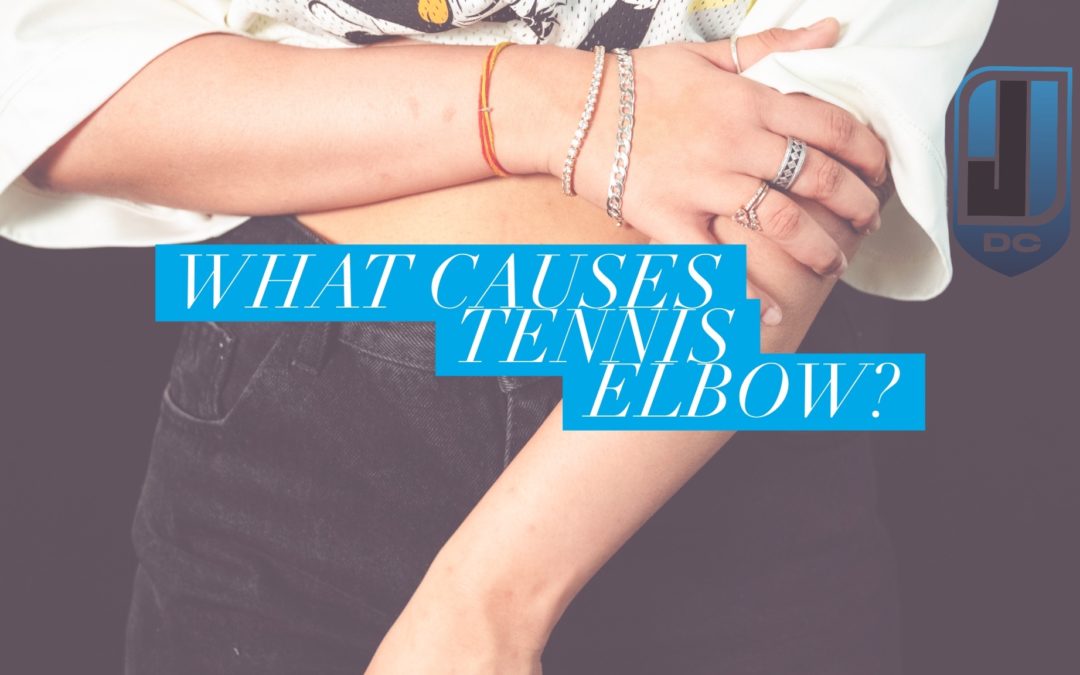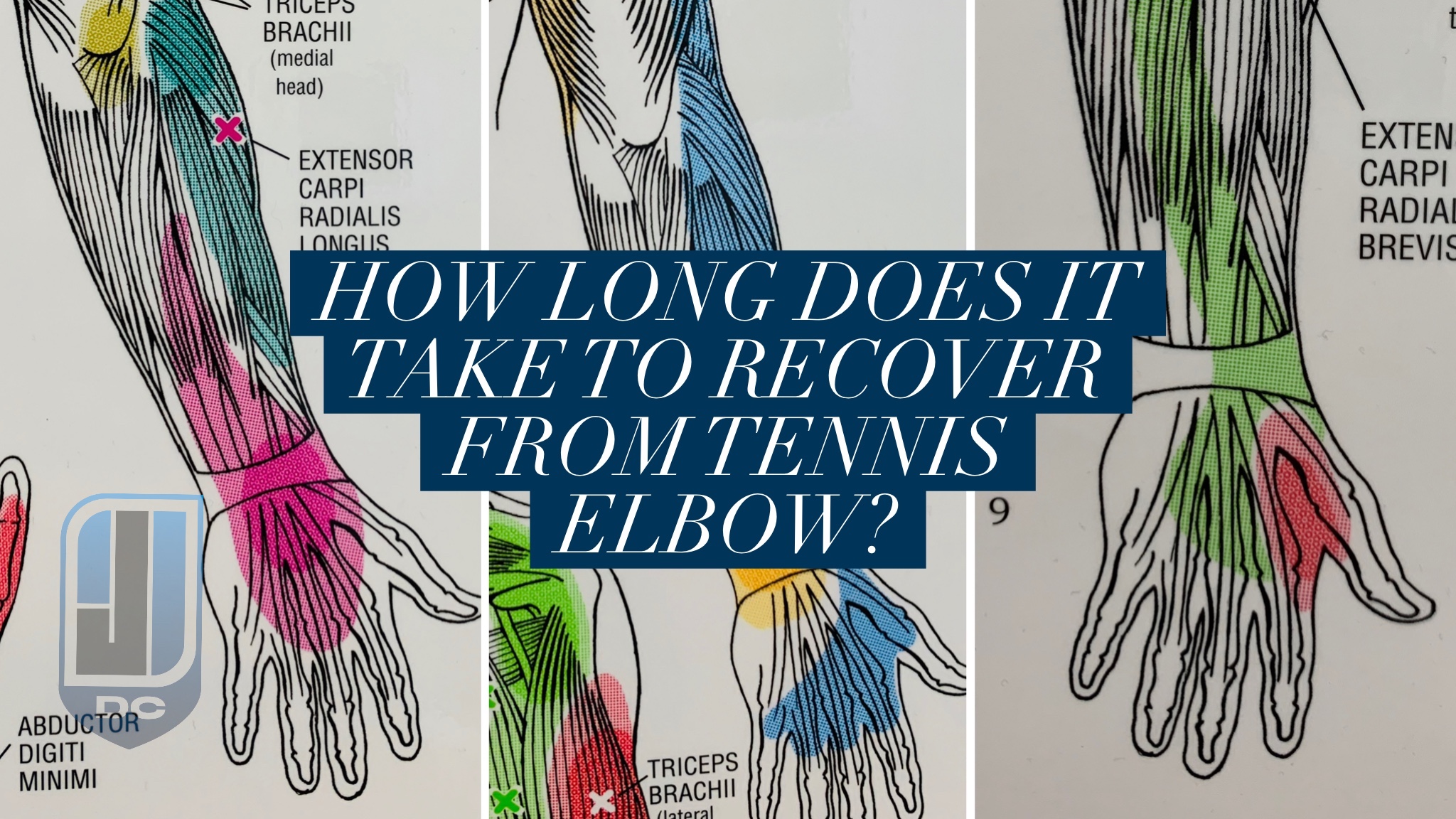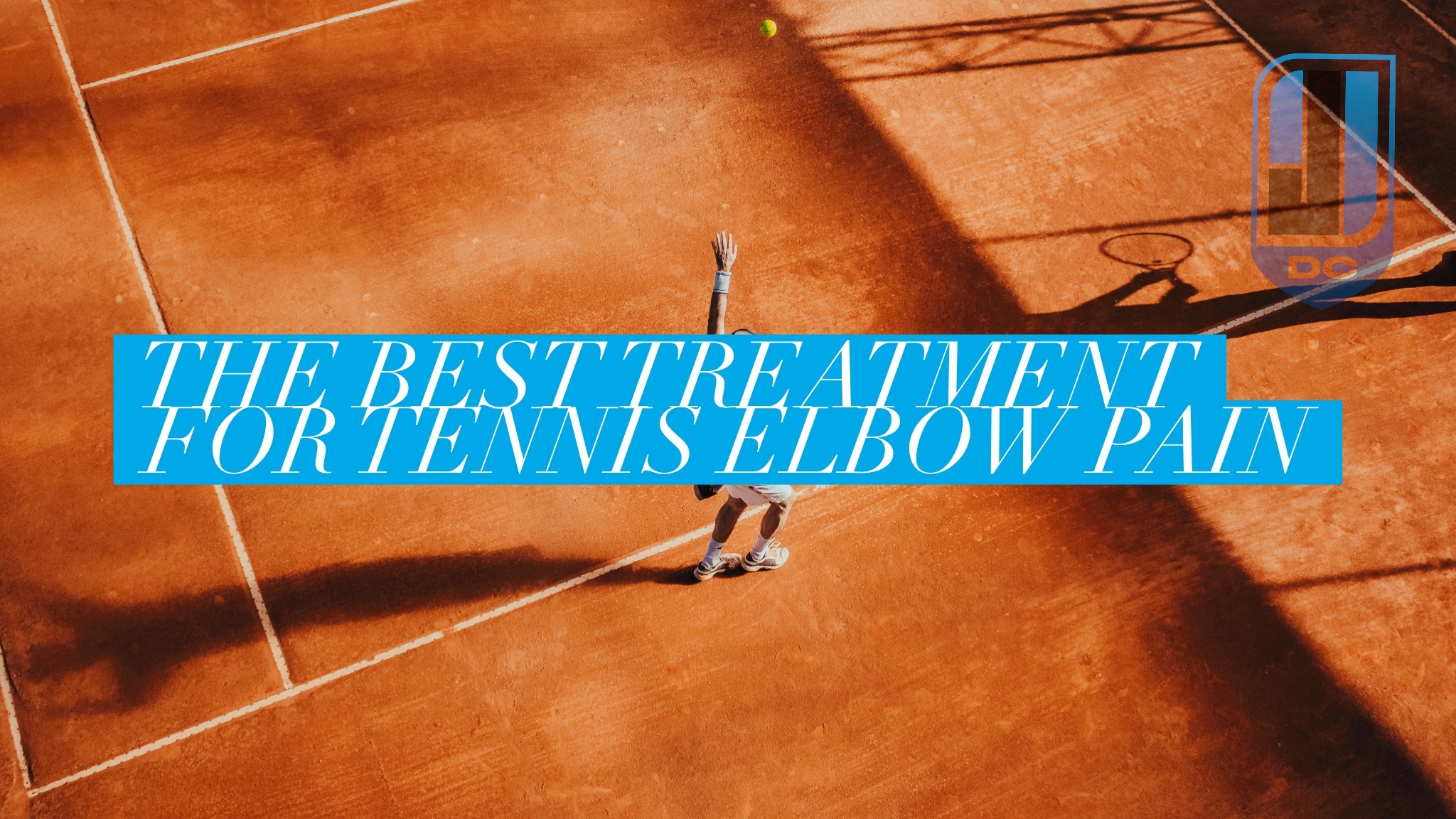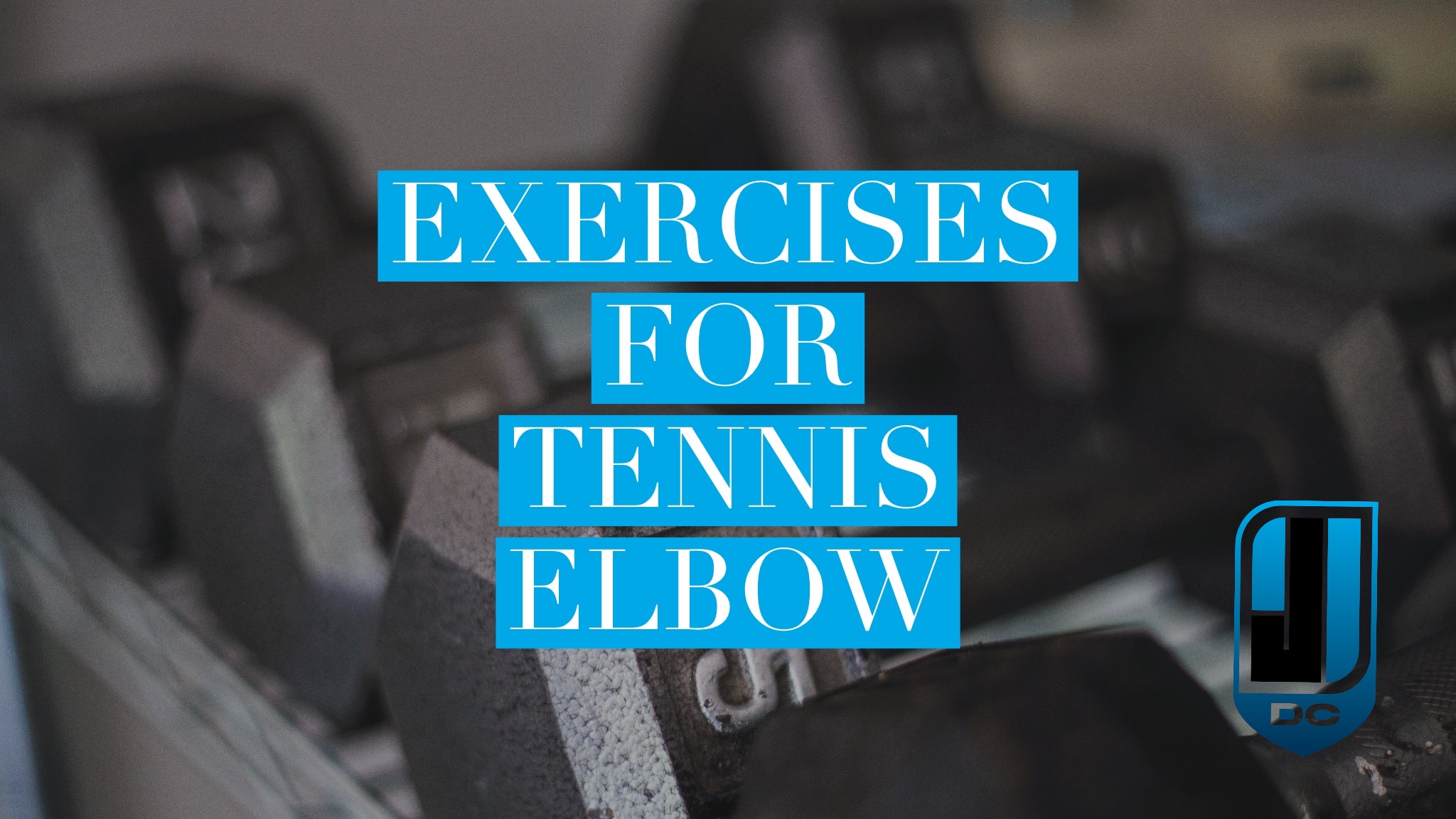What causes tennis elbow? Tennis elbow is a condition caused by two specific movements of the wrist and forearm. When these movements are done over and over it causes pain in the outside of your forearm region. Commonly known as tennis elbow, the medical terms for this condition are lateral epicondylitis (previously) and lateral epicondylitis (the most accurate term.) In this content I’m going to answer your questions and topics about tennis elbow, like:
- How to know if you have tennis elbow?
- Can you have tennis elbow if you don’t play tennis?
- What movements cause tennis elbow?
- Is tennis elbow an overuse injury?
This is PART 1 of a three part series. Make sure you check out my other blogs below where I answer more questions about how to recover from tennis elbow and the best treatment for tennis elbow. As always, if you have more questions make sure you reach out on my website, Facebook, or YouTube. I’ll do my best to answer them or create a video for you! If you want to see where I work and schedule a visit with me you can do that here!
- How long does it take to recover from tennis elbow?
- Which muscles are damaged in tennis elbow?
- What causes tennis elbow pain?
- Elbow conditions similar to tennis elbow
- Treatments for tennis elbow
- Home treatments for tennis elbow pain
- Rehabilitation for tennis elbow
- Medical treatments for tennis elbow
- The best treatment for tennis elbow pain relief
- Evidence for conservative care as the best treatment
How to Know if You Have Tennis Elbow?
The best way to know if you have tennis elbow is to correlate the symptoms of this condition with your pain. Here is a detailed list of tennis elbow symptoms:
- Pain over the outside of the elbow and/or forearm near the elbow. Tennis elbow pain is usually quick and sharp with certain movements. However, pain may be sore, dull, and aching when at rest. If you have tennis elbow you may find that it’s constant but worsens with certain movements.
- Tennis elbow pain worsens when moving your wrist, especially against resistance. Opening a jar is a classic symptom that produces pain. Importantly, tennis elbow pain can occur or worsen with many other activities. Gripping, lifting, squeezing, turning, and moving the wrist with any tasks often produce pain in the forearm. In cases of tennis elbow that are more severe it can be difficult to move your wrist or hand in any motion.
- Initially, you may have swelling and redness over the outside of your elbow. With tennis elbow injuries, the initial injury may cause inflammation resulting in redness and swelling. Usually this improves within the first week but your pain persists.
- The outside of your elbow is tender to the touch. If you push around on the outside of your elbow it will be tender in the case of tennis elbow. Tenderness can extend down your forearm and to the back of your elbow as well.
- Weakness with grip or resisted movements of your hand, wrist, or elbow. You may find it difficult to open a jar, grip the steering wheel, or hold weights with tennis elbow. This isn’t true in 100% of cases but is fairly common.
You may not have all the symptoms of tennis elbow, but you probably have a few of these. Tennis elbow can coexist with other elbow conditions, so if you have additional symptoms that may be the case. It’s a fairly easy condition to recognize, so these symptoms generally put it high on my diagnosis list.
Where is Tennis Elbow Pain?
- Tennis elbow pain is on the outside of your forearm and elbow area.
- The black arrows show the most common location of tennis elbow pain. There’s commonly tenderness throughout the area that is shaded dark green. If you’re pain is in this area you should be thinking TENNIS ELBOW!
- Remember, there are other conditions that can cause pain in this area, more on those later!
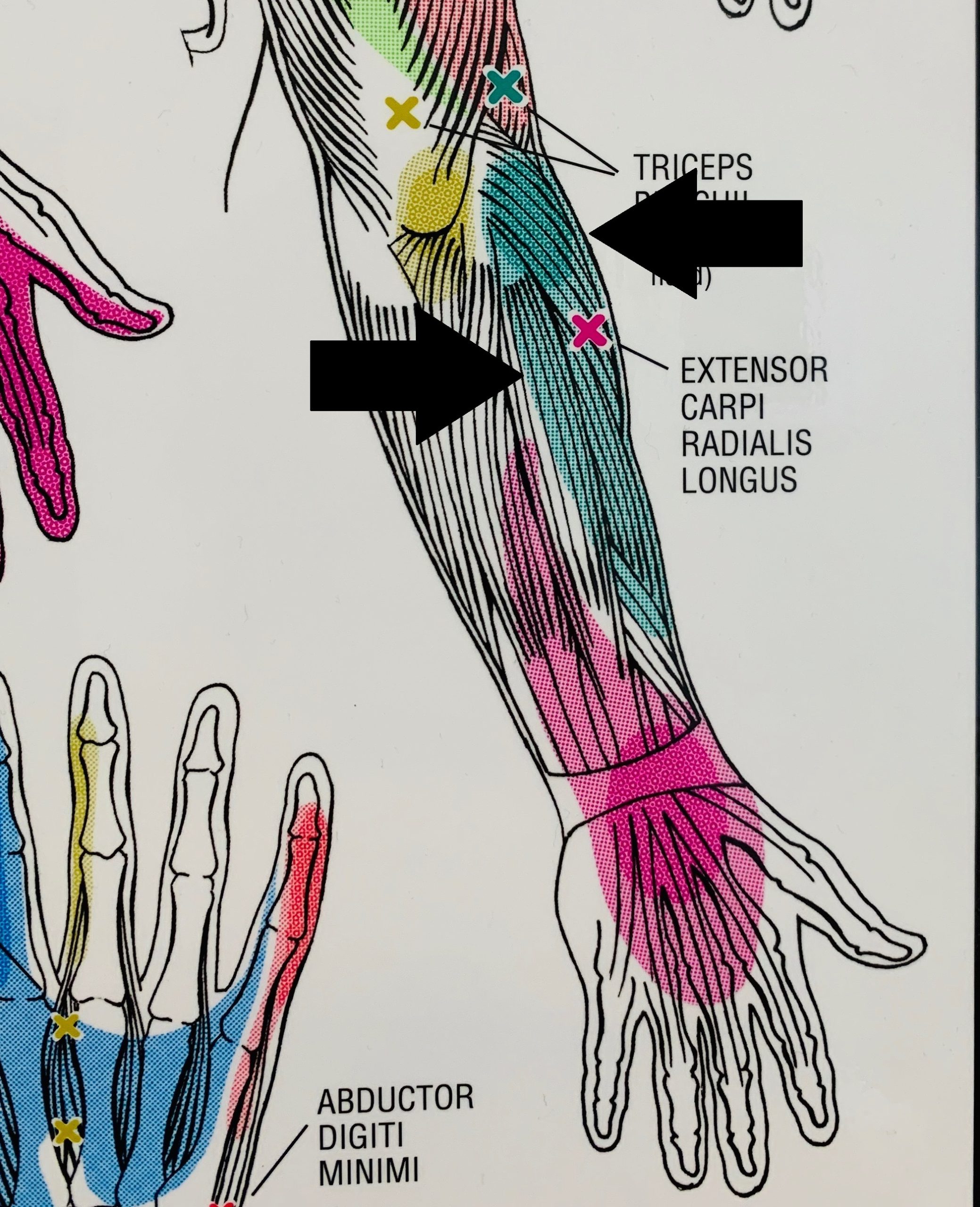
Can You Have Tennis Elbow if You Don’t Play Tennis?
Yes, you can definitely suffer from tennis elbow even if you don’t play tennis. In fact, the majority of people with this condition don’t play tennis.
When you play tennis you are repeatedly extending your wrist and fingers when moving your racquet. You also twist the racquet frequently when hitting forehand or backhand shots. These are some of the movements that precede the injury, so that’s how it got it’s name. The term tennis elbow is really just a layman’s term and has stuck around because it’s easier to say than lateral epicondylopathy.
What Movements Can Cause Tennis Elbow?
Tennis elbow is caused or worsened by a few specific movements of the forearm. The two movements that cause tennis elbow are:
- Repeated supination and pronation of the forearm. Supination and pronation are the movements you do when you turn your palm up and down. Think about doing “jazz hands” or the motion you do when you’re signaling “so, so.”
- Wrist and finger extension. Wrist extension is when you move your palm so it’s facing forward, as if you were telling someone to “stop.” Finger extension is the movement of raising your fingers when your palm is facing down. Think about raising your pointer finger if you were signaling “just one second.”
These two movements, when you perform them over and over, can cause tennis elbow. They can also worsen your symptoms when you already have elbow pain from the condition. Your pain may not be from one of these movements, but from the combination of both of them. If you’re making these movements while holding something in your hand or against resistance, this is likely the movement that caused your injury.
Is Tennis Elbow an Overuse Injury?
Tennis elbow is what’s called an overuse injury, or repetitive strain injury. It doesn’t happen after doing a movement wrong or one of the above movements just a few times. Tennis elbow injury occurs after doing a movement too much for what your muscles can accommodate for. In medical language, you’re exceeding the capacity of the tendons of muscles in your forearm.
Since tennis elbow is an overuse injury, it’s more common in certain professions or people with certain hobbies. Common professions and activities that suffer with it at a higher rate include:
- Carpenters
- Bricklayers
- Seamstresses and tailors
- People who play instruments
- Those who shake hands a lot
- Office workers, or those who use a keyboard and mouse a lot.
That last bullet point is going to cover a lot of people. In the US, our jobs have increasingly moved towards using a computer for most of the day. Think about the amount of keystrokes you make a day and how often your hand is on your mouse.

The opinions and views are mine personally, and do not necessarily reflect the views of others in the profession, my employer, or organizations that I belong to.

